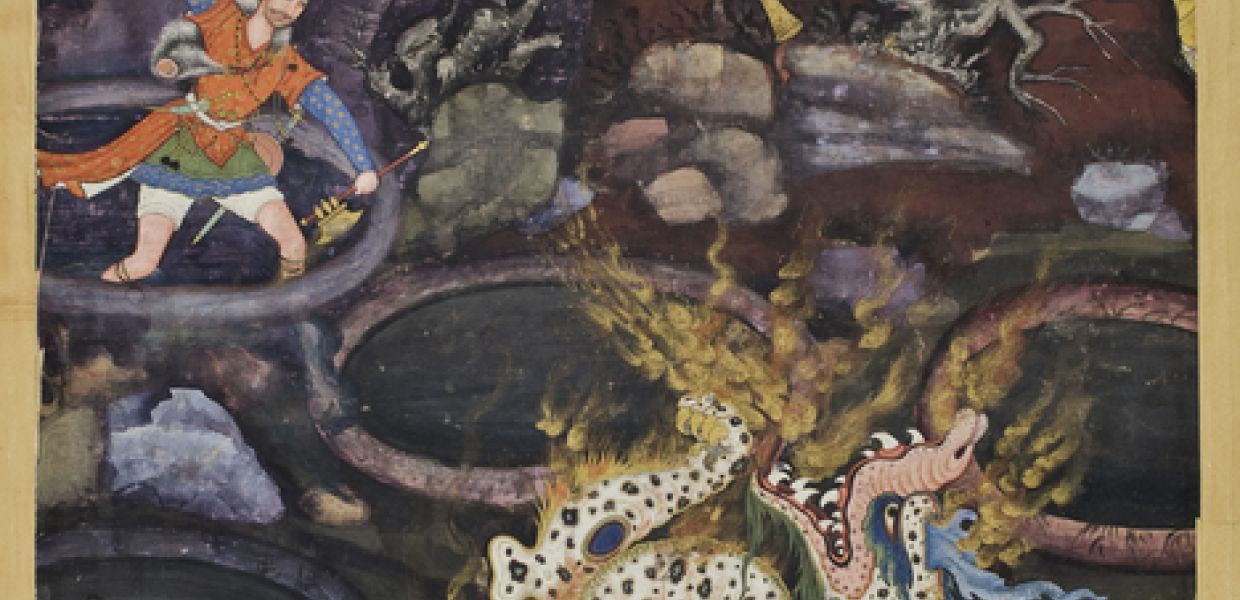Choosing a country's artworks for Europeana 280: Austria

With the Europeana 280 campaign in full swing across Europe, we continue this weekly blog series, finding out some of the back stories behind each country's selections.
This week, Europeana 280’s Exhibition Coordinator Ann Maher highlights nominations from Austria.
One of the world’s greatest Renaissance artifacts, the gold-plated Saliera (salt cellar), created in Paris by master craftsman Cellini between 1540 and 1543, is the very epitome of treasure. Designed by an Italian, commissioned by a French king, and now in the Kunsthistorisches Museum collection in Vienna, it’s one of Austria’s glittering choices for Europeana 280. Nominations come from several institutions that were allowed to select just two objects from their collection according to the brief provided by the Ministry of Culture. What are some highlights of the Austrian selection?
Graphic masterpieces
Studies by Michelangelo Buonarroti and Albrecht Dürer are early 16th century nominations from the Albertina in Vienna. Founded in 1776 by Duke Albert of Saxe-Teschen, the collection includes 65,000 drawings and around a million printed graphic works on paper from all major artistic periods from late Gothic to contemporary. A difficult choice but according to curator Regina Doppelbauer, the nominations are representative of an outstanding resource for these artists at the museum: “The Albertina safeguards some 120 drawings and watercolours and the complete body of graphic prints produced by Dürer, as well as around 4,000 drawings by Italian artists such as Raphael and Michelangelo.”

Umar defeats a dragon, attributed to: Dasavanta and Tara (1567 to 1572), MAK – Austrian Museum of Applied Arts / Contemporary Art, public domain.
From the Austrian Museum of Applied Arts/Contemporary Art (MAK), comes a vivid document of the golden age of Hindu-Islamic culture during the reign of Mughal Emperor Akbar the ‘Great’ (1556-1605). The elaborately detailed paintings in the heroic epic Hamzanama fuse principles of the traditional Persian, Indian, as well as Chinese painting schools. When 60 folios (out of 200 that survive) were presented in the Pavilion of the Persian Empire at the Vienna World’s Fair in 1873, they were immediately acquired by the MAK. As Peter Klinger from the museum stated about their selection: “Even at that time, the museum recognized them as genuine treasure troves of costumes, architecture, vessels, devices, weapons, all of which are ornamented in a most rich and captivating way. They are among the most superb and significant existing anywhere in the world”.
Exemplifying Austrian art
The Belvedere museum, housed in a complex of Baroque palaces in Vienna, nominated two iconic works of national importance, as baroque-curator Dr Georg Lechner explained: “The Simpleton by Franz Xaver Messerschmidt and Gustav Klimt’s Kiss can be seen to exemplify Austrian art. Each belongs to a period of crucial importance to the region of modern-day Austria: the Baroque era and the time around 1900. The accomplishments in art, architecture, and music of these two ages have come to shape the country and its image to this day.”
Both objects are closely related to the history of the museum’s holdings, according to Lechner. “These collections found a home in the Belvedere palaces, originally constructed for Prince Eugene of Savoy between 1712 and 1723. Klimt’s Kiss – shown in 1908 at the legendary Kunstschau exhibition where it was acquired for the museum – was a key piece at the Moderne Galerie, founded in 1903, which would later evolve and expand into today’s Österreichische Galerie Belvedere. The Baroque collection, on the other hand, including Messerschmidt’s Heads, was established in 1923 following the reorganization of the state museums in the aftermath of the First World War.”
Expressionist treasure
Over in Germany in the 1920s, expressionism was one of several experimental cultural trends looking to the future that were reflected in film as well as in painting and literature. The poster for the Fritz Lang film Metropolis (1926) was designed by Heinz Schulz-Neudamm and features a female automaton from this forerunner of science fiction films. It is a nomination from The Austrian National Library of Vienna. Few copies from films of the 20s and 30s have survived, and unsurprisingly, this iconic robot has been referred to as the ‘crown jewels’ of film posters.
We hope you're enjoying appreciating the wonderful art selected for the Europeana 280 campaign soon. Join the conversation on Twitter via #Europeana280.
